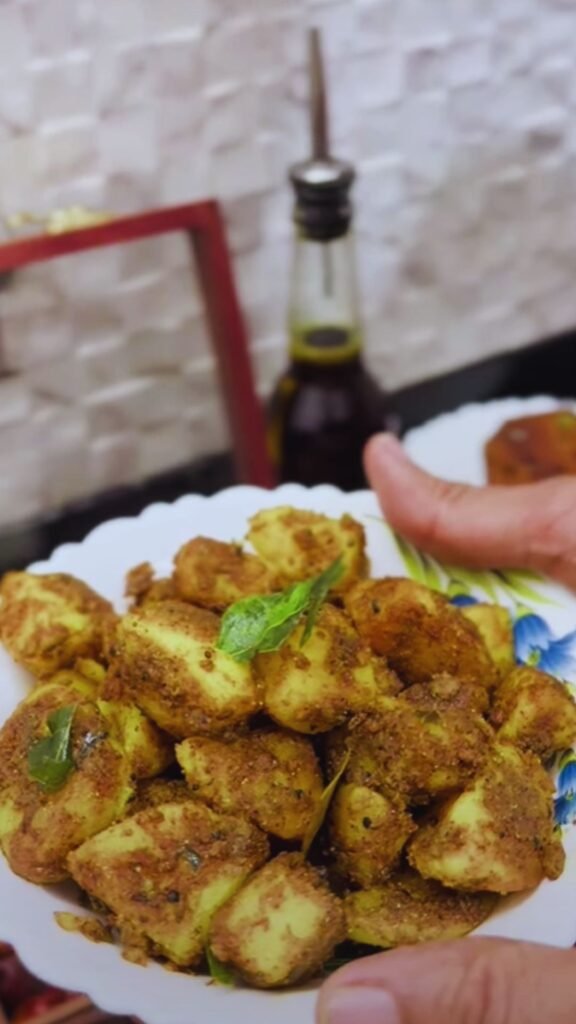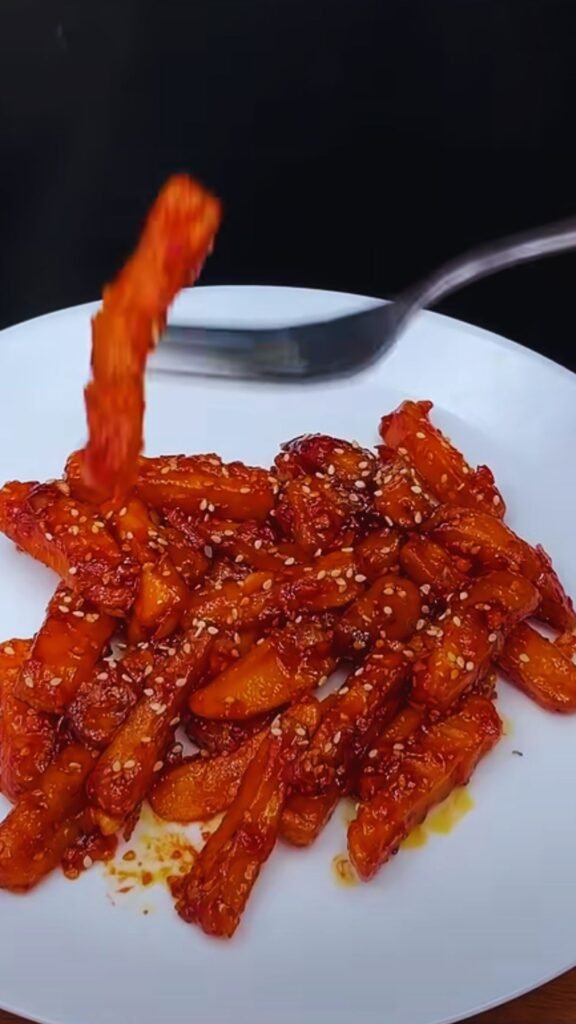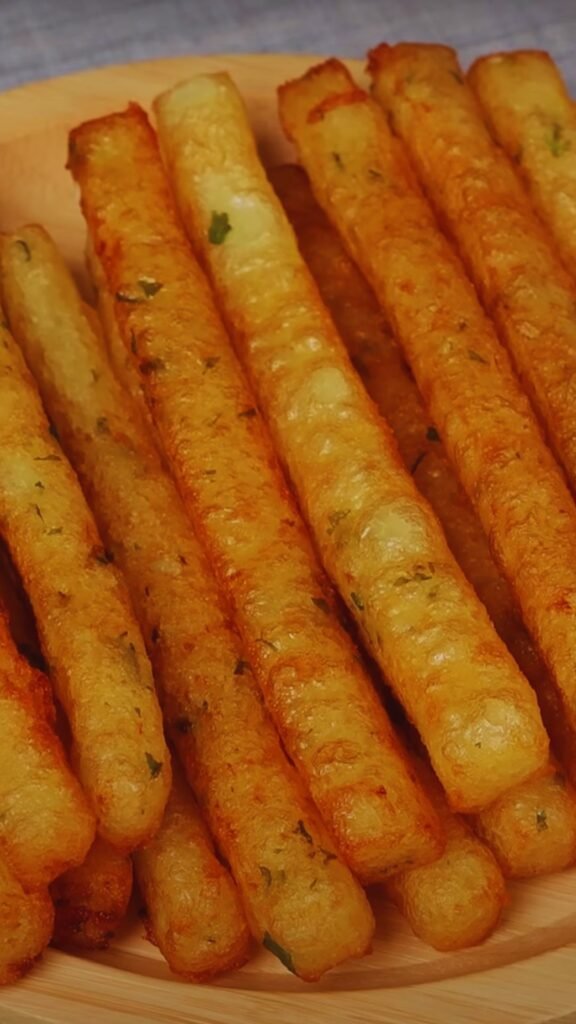Have you ever wondered why restaurant potatoes taste so much better than the ones you make at home? I’ve asked myself this question countless times while staring disappointedly at my soggy, flavorless attempts. After years of potato mediocrity, I stumbled upon a technique that completely transformed my spud game forever. It’s all about the magic sauce and the flip—a simple yet revolutionary approach that delivers restaurant-quality potatoes right in your own kitchen.
Today, I’m sharing my hard-earned secrets that took me from potato zero to potato hero. This isn’t just another recipe; it’s a foolproof method that will change how you think about this humble vegetable forever.
The Perfect Potato Foundation
Before we dive into the magic sauce that makes this recipe spectacular, we need to start with the right foundation. Not all potatoes are created equal, and choosing the right variety makes a tremendous difference in your final result.
Best Potato Varieties for Crispy Results
| Potato Variety | Starch Content | Best Applications | Texture After Cooking | Notes |
|---|---|---|---|---|
| Yukon Gold | Medium | All-purpose, excellent for this recipe | Creamy interior, crispy exterior | My personal favorite for this technique |
| Russet | High | Baking, frying | Fluffy interior, very crispy exterior | Great when you want maximum crispiness |
| Red Potatoes | Low | Roasting, salads | Waxy, holds shape well | Use when you want defined potato pieces |
| Fingerling | Low-Medium | Roasting whole | Buttery texture | Elegant presentation option |
| Purple/Blue | Medium | Roasting, mashing | Earthy flavor, maintains color | Dramatic presentation |
I personally reach for Yukon Golds every time I make this recipe. Their balanced starch content creates that perfect contrast between a shatteringly crispy exterior and a creamy, tender interior that melts in your mouth.
Essential Kitchen Tools
Before we begin cooking, let’s make sure you have the right equipment on hand:
- Heavy-bottomed skillet (cast iron works beautifully)
- Sharp chef’s knife
- Large mixing bowl
- Measuring spoons and cups
- Silicone spatula (for the perfect flip)
- Kitchen towel or paper towels
- Microplane or fine grater (for garlic and zesting)
The Magic Sauce Ingredients
This sauce is what elevates ordinary potatoes to extraordinary status. It’s a carefully balanced blend of flavors that creates depth, umami, and an irresistible glaze that caramelizes perfectly when flipped.
| Ingredient | Amount | Function | Substitute Options |
|---|---|---|---|
| Unsalted Butter | 4 tablespoons | Base, richness, browning | Ghee, high-quality olive oil |
| Fresh Garlic | 4 cloves, minced | Aromatic foundation | 1 tsp garlic powder (not as good but works) |
| Fresh Rosemary | 2 sprigs | Herbal complexity | Thyme or sage |
| Lemon Zest | From 1 lemon | Brightness, acid balance | Orange zest or 1 tsp white wine vinegar |
| Honey | 1 tablespoon | Caramelization, balance | Maple syrup or brown sugar |
| Dijon Mustard | 1 teaspoon | Tangy depth, emulsifier | Whole grain mustard or mustard powder |
| Smoked Paprika | 1 teaspoon | Smoky complexity | Sweet paprika + dash of liquid smoke |
| Low-Sodium Soy Sauce | 1 tablespoon | Umami boost | Tamari, coconut aminos, or Worcestershire sauce |
| Red Pepper Flakes | ¼ teaspoon | Subtle heat | Black pepper or cayenne (use less) |
| Flaky Sea Salt | 1 teaspoon | Seasoning | Kosher salt (use slightly less) |
The magic happens when these ingredients come together—the butter browns, the garlic becomes aromatic, the honey caramelizes, and the soy sauce adds that mysterious umami element that will have everyone asking for your secret.

Potato Preparation: The First Secret
Now, let’s talk about potato prep, which is often overlooked but crucial for achieving maximum crispiness.
Step-by-Step Perfect Prep
- Wash your potatoes thoroughly under cold water.
- Decide whether to peel or not peel—the choice is yours! I often leave the skins on for extra texture and nutrients.
- The Parboil Secret: Cut potatoes into 1-inch cubes and parboil them in heavily salted water for exactly 4 minutes—no more, no less.
- The Steam-Dry Technique: After draining, return potatoes to the hot empty pot and give them a gentle shake. Allow them to steam dry for 2 minutes.
- The Roughing-Up Method: After steam drying, shake the pot vigorously to roughen up the potato surfaces. These rough edges will become incredibly crispy during cooking.
This preparation method creates the perfect foundation for our magic sauce to adhere to and creates those delightful crispy edges that make restaurant potatoes so irresistible.
The Magic Sauce Preparation
Now for the heart of this recipe—the sauce that transforms ordinary potatoes into something extraordinary.
- In a small saucepan over medium-low heat, melt the butter until it begins to foam.
- Add the minced garlic and cook for 30 seconds until fragrant but not browned.
- Add the rosemary sprigs and continue cooking for another 30 seconds.
- Whisk in the honey, Dijon mustard, smoked paprika, soy sauce, and red pepper flakes.
- Remove from heat and stir in the lemon zest.
- Allow to cool slightly before using—this helps the flavors meld together.
The aroma alone will have your mouth watering, but resist the temptation to taste-test too much or you might not have enough left for your potatoes!
The Cooking Process and the Magical Flip
Here’s where the magic truly happens—the cooking process that creates perfectly crispy yet tender potatoes with an incredible flavor profile.
The Initial Crisping
- Heat 2 tablespoons of neutral oil (avocado or canola work well) in your heavy-bottomed skillet over medium-high heat until shimmering.
- Add the parboiled, roughed-up potatoes in a single layer. Don’t overcrowd the pan—work in batches if necessary.
- Let them cook undisturbed for 5-6 minutes. Patience is key here!
- Check the bottom of one potato—it should be developing a golden-brown crust.
The Magic Sauce Application and Flip
Once your potatoes have developed a nice crust on the bottom, it’s time for the transformative step:
- Reduce heat to medium.
- Pour the magic sauce evenly over the potatoes.
- The Magical Flip: Using your silicone spatula, carefully but confidently flip each potato piece so the crispy side faces up.
- The sauce will sizzle dramatically and begin to reduce and caramelize around the potatoes.
- Continue cooking for another 3-4 minutes until the sauce has reduced to a sticky glaze that coats each potato piece.

This flip is the defining moment of the recipe—when the already crispy side gets coated with the reducing magic sauce, creating layers of texture and flavor that are simply irresistible.
Troubleshooting Common Issues
Even with the best recipes, things can sometimes go wrong. Here’s how to address common potato problems:
| Problem | Likely Cause | Solution |
|---|---|---|
| Potatoes sticking to pan | Pan not hot enough initially | Ensure oil is shimmering before adding potatoes |
| Sauce burning | Heat too high | Reduce heat immediately after adding sauce |
| Potatoes too soft | Overboiled initially | Stick strictly to the 4-minute parboil time |
| Not crispy enough | Didn’t steam dry properly | Ensure potatoes are thoroughly dried after boiling |
| Sauce too thin | Not enough reduction time | Continue cooking until sauce reaches a sticky consistency |
| Unevenly cooked | Inconsistent potato pieces | Cut potatoes into uniform sizes |
Serving Suggestions
These magical crispy potatoes make an incredible side dish, but they’re versatile enough to star in many different meals:
- Serve alongside a perfectly cooked steak for a classic steakhouse experience at home
- Top with a fried egg for an indulgent breakfast
- Add to a grain bowl with roasted vegetables for a hearty lunch
- Use as a base for loaded potatoes with cheese, sour cream, and chives
- Serve as an appetizer with a cooling yogurt dip
- Add to a brunch spread with frittata and fresh fruit

Variations to Try
Once you’ve mastered the basic technique, try these exciting variations:
Herb Garden Delight
Swap the rosemary for a mixture of fresh thyme, sage, and oregano.
Spicy Southwest
Add 1 teaspoon of cumin and ½ teaspoon of coriander to the sauce, and finish with chopped cilantro.
Mediterranean Twist
Use olive oil instead of butter, add 1 tablespoon of capers, and finish with crumbled feta cheese.
Asian-Inspired
Replace soy sauce with equal parts mirin and soy sauce, add 1 teaspoon of grated ginger, and finish with sliced green onions.
Truffle Luxury
Add 1 teaspoon of truffle oil to the finished potatoes and garnish with freshly grated Parmesan cheese.
Frequently Asked Questions
Can I make these potatoes ahead of time? While they’re best served immediately, you can parboil the potatoes up to a day ahead. Store them in the refrigerator, then complete the recipe when ready to serve.
My potatoes aren’t getting crispy. What am I doing wrong? The most common issue is moisture. Make sure your potatoes are thoroughly steam-dried after parboiling, and don’t overcrowd the pan during cooking.
Can I use dried herbs instead of fresh? Yes, but reduce the amount to ⅓ of what the recipe calls for with fresh herbs. Add dried herbs earlier in the cooking process to allow them to rehydrate.
Is there a dairy-free version of the magic sauce? Absolutely! Substitute the butter with a high-quality olive oil or a plant-based butter alternative. The flavor profile will be slightly different but still delicious.
What’s the best way to reheat leftover potatoes? Reheat in a hot skillet with a small amount of oil. Avoid the microwave, which will make them soggy.
Can I double the recipe for a larger crowd? Yes, but cook in batches rather than overcrowding the pan, which would prevent proper crisping.
My sauce separated. How can I fix it? If your sauce separates, whisk in a teaspoon of cold butter off the heat to re-emulsify it.
The Science Behind Perfect Potatoes
Understanding the science behind this technique helps you appreciate why it works so well:
- Parboiling gelatinizes the starches in the potato, creating a foundation for a creamy interior.
- Steam-drying removes surface moisture, which is the enemy of crispiness. Water creates steam when it hits hot oil, preventing proper browning.
- Roughing up the surface increases the surface area and creates more edges that can get crispy—more texture means more flavor.
- The initial undisturbed cooking allows a proper Maillard reaction to occur, developing deep flavor compounds and color.
- The magic sauce flip creates a dual-texture experience: the initial crispy side now absorbs sauce while protecting its texture, and the second side develops its own unique texture.
This combination of techniques creates potatoes with multiple layers of texture and flavor—crispy, creamy, caramelized, and aromatic—that simply can’t be achieved with simpler methods.
Final Thoughts
The journey to perfect potatoes has been a long one for me, filled with many disappointing batches and soggy results. Discovering this magic sauce and flip technique completely transformed my potato game, and I hope it does the same for you.
Remember that cooking great food is about understanding techniques more than following recipes to the letter. Once you understand the principles behind this method—parboiling, steam-drying, proper heat management, sauce reduction, and the all-important flip—you can adapt it to your own taste preferences and create your own “magic” variations.
I’d love to hear how this technique works for you and what variations you come up with. These potatoes have become a signature dish in my home, requested by family and friends whenever I’m cooking. They might just become your new specialty too!
Happy cooking, and enjoy those perfectly crispy, saucy, magical potatoes!
Q&A Section
Why is parboiling important for crispy potatoes? Parboiling partially cooks the potatoes and gelatinizes the starches on the surface. This creates a foundation for maximum crispiness when they hit the hot pan. Without parboiling, potatoes often end up either burnt on the outside and raw inside, or fully cooked but not crispy.
What makes the “magic sauce” so special? The magic sauce combines multiple flavor dimensions—sweet, salty, umami, acidic, and aromatic—that create depth. The real magic happens during the flip, when these ingredients caramelize and reduce around the potatoes, creating a glaze that’s greater than the sum of its parts.
Can I use this technique with sweet potatoes? Yes! Sweet potatoes work wonderfully with this technique, though they need slightly different handling. Reduce the parboiling time to 3 minutes, as they’re softer. The magic sauce pairs beautifully with their natural sweetness.
How important is the type of pan I use? Very important! A heavy-bottomed pan, preferably cast iron, maintains consistent heat and creates the best crispy texture. Thin pans tend to have hot spots that can burn some potatoes while leaving others undercooked.
Why do restaurant potatoes always taste better than homemade? Restaurants typically use techniques like parboiling, proper drying, and high-heat cooking that home cooks often skip. They also aren’t afraid of using adequate fat and salt, which are crucial for flavor development. This recipe incorporates all these professional techniques.
Is the “flip” really necessary? Absolutely! The flip is what makes this technique revolutionary. It ensures that the initial crispy side gets coated in the reducing sauce while preserving its texture, creating a multi-dimensional experience that simple roasting can’t achieve.
How can I tell when the potatoes are perfectly done? Look for these three signs: a deep golden-brown color, a sauce that has reduced to a sticky consistency (it should coat the back of a spoon), and potatoes that offer slight resistance when pierced with a fork but aren’t hard in the center.
What’s the biggest mistake people make with this recipe? Impatience! Not allowing the potatoes to develop a proper crust before flipping, or stirring them too frequently, prevents the development of that magical crispy texture. Trust the process and resist the urge to constantly check and stir.


